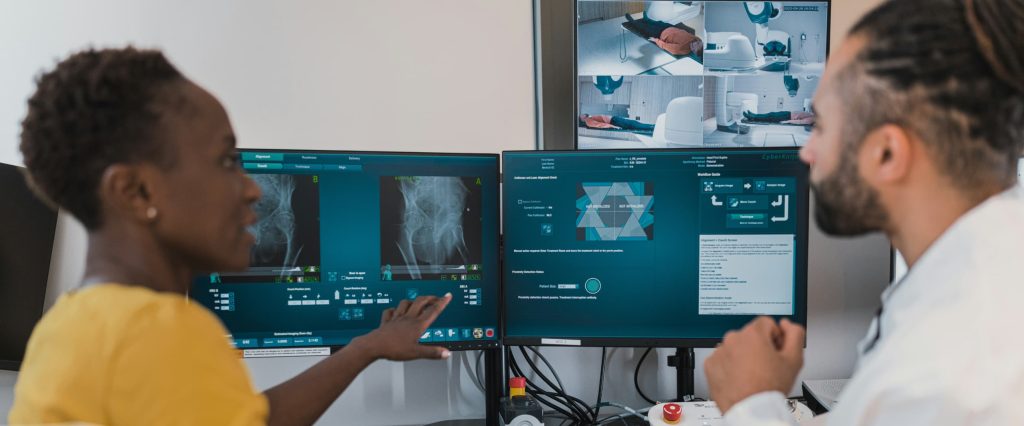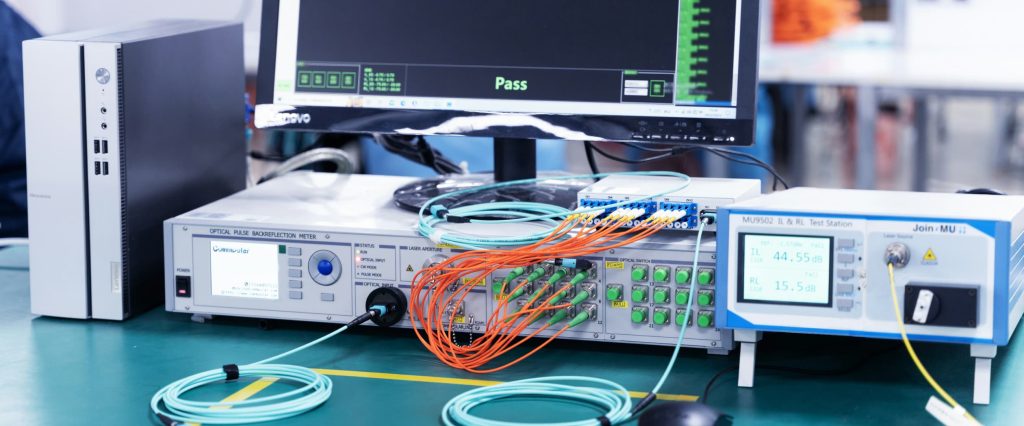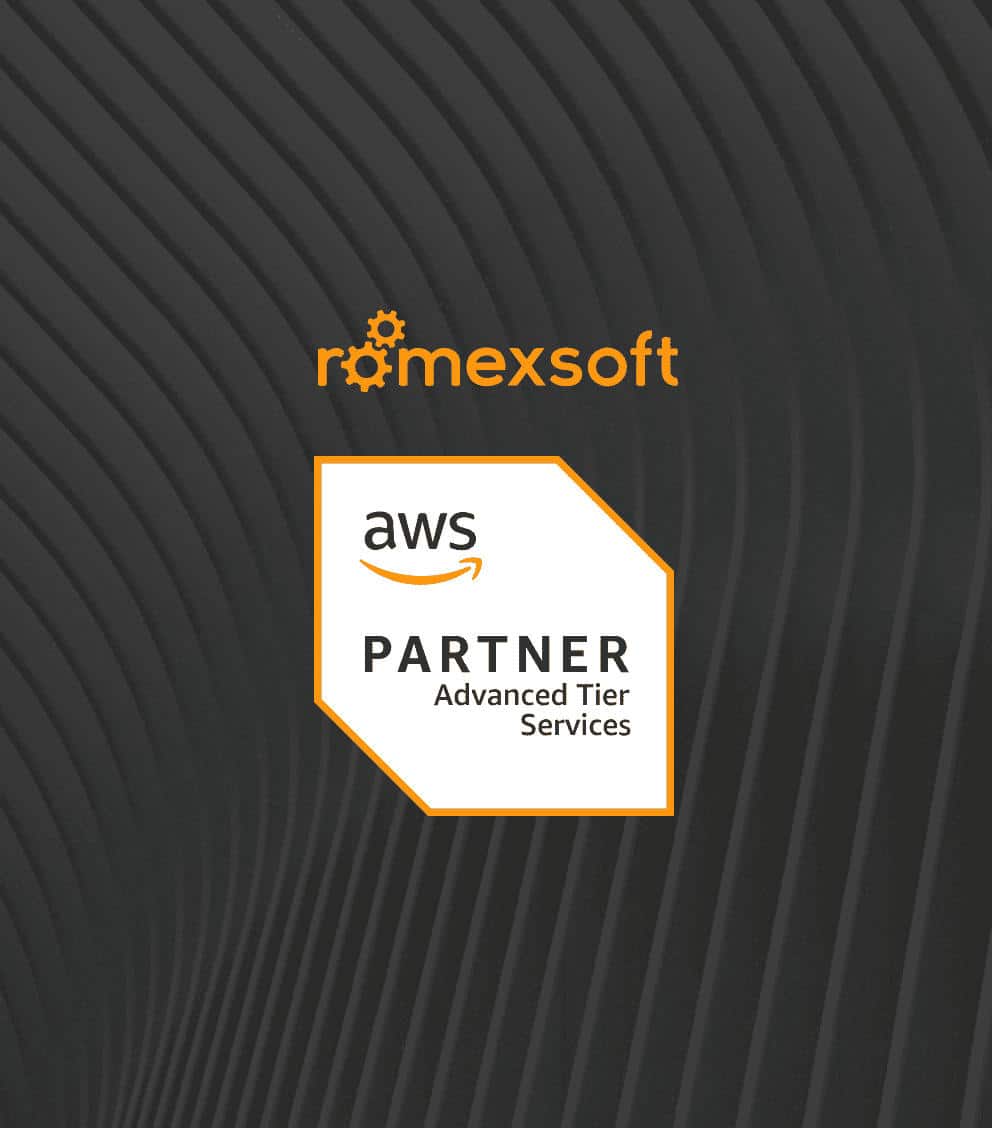RIS and PACS Integration for Better Radiology Performance
Effective medical imaging and patient data management rely on specialized healthcare IT systems: PACS and RIS. The purpose of these foundational technologies is to streamline radiology operations, with RIS handling administrative tasks and PACS managing critical image storage and sharing. This article explores the distinct role of each system and how their integration transforms clinical workflows, enhances diagnostic accuracy, and improves patient safety.
The blog highlights:
- what is RIS and PACS
- key differences
- integration benefits
- integration challenges
- implementation and upgrade guide
- emerging trends

Table of Contents
In modern healthcare, the critical task of managing vast amounts of medical imaging and patient data is performed by specialized IT systems: Picture Archiving and Communication Systems (PACS) and Radiology Information Systems (RIS). Each plays a distinct role in ensuring efficient data flow and optimal patient care. In this article, we will highlight how their contributions and combined strength boost clinical efficiency and drive future developments in medicine.
Table of Contents
What is RIS
Radiology Information System (RIS) is a centralized platform that is designed to handle various tasks of a radiology department, whether those are operational, clinical, or administrative. Radiology Information System serves as the core, underlying computer system that is responsible for streamlining imaging processes, integrating patient data, and enabling prompt communication between radiologists, technologists, referring physicians, and hospital systems.
Core Functions of RIS
RIS is a foundational tool that handles many different radiology-related tasks that help standardize operations, minimize manual workload, and guarantee clinical accuracy across the imaging lifecycle. It fulfills several key functions, specifically:
- Patient Scheduling and Registration.
RIS makes patient registration easy and guarantees correct personal and insurance details for every scan request. - Order Management.
This information system keeps track of all scan requests, assigns them to the correct procedure, and directs orders to the appropriate modality or personnel. - Worklist Distribution.
RIS automatically distributes tasks to radiologists and technologists, taking into account the urgency of the work, their current availability, and the type of imaging equipment. - Reporting and Documentation.
It allows structured reporting, electronic signature, and automatic delivery of reports to referring providers. - Billing Integration.
The system records codes for procedures and diagnoses, which simplifies billing, helps manage payments, and ensures all regulations are met. - Analytics and Audit Trails.
RIS provides easy-to-read dashboards and reports that help track operational performance, cut down on delays, and support efforts to ensure high quality.
What is PACS
Picture Archiving and Communication System, or PACS, represents a medical imaging technology that handles digital images and their related information. It lets healthcare professionals securely store, find, manage, distribute, and view these images. PACS replaces old film-based methods with a central digital system that allows radiologists and other doctors to access diagnostic images anytime and from almost any location, and makes the process much more efficient.
Core Functions of PACS
The primary role of PACS is to ensure fast, secure, and scalable management of imaging data between various environments. There are several integral functions performed by this information system, namely:
- Image Acquisition and Storage.
PACS retrieves images from multiple imaging modalities (CT, MRI, X-ray, ultrasound) and stores them in a single data repository. - DICOM Standardization.
The system formats images via the DICOM (Digital Imaging and Communications in Medicine) standard, which contributes to the interoperability across vendors and systems. - Image Viewing and Analysis.
It offers advanced tools for diagnosis, like zoom, 3D views, and notes, which can be used with a web browser or specialized computer software. - Secure Access and Sharing.
PACS ensures that authorized users can view and share images instantly across different hospital departments, other facilities, or with outside specialists. - Integration with RIS and EHR.
By synchronizing image data with patient records and radiology workflows, this information system provides full diagnostic context in a single interface.
Key Differences Between RIS and PACS
While RIS and PACS are both fundamental to modern radiology practices, they handle distinctly different aspects of the imaging workflow. Understanding their separate roles is crucial to seeing how they work together seamlessly. In this section, we will break down the key differences between these two information systems and their unique features.
Purpose and Function
RIS represents the operational foundation of the radiology department – this system handles all stages of the workflow, covering the entire workflow, from scheduling and ordering procedures to reporting findings and handling payments. RIS controls the delivery of imaging services, their assignment, documentation, and billing. Ultimately, this information system records all the essential facts for every imaging test: who was involved, what occurred, when it happened, and how it was managed.
On the other hand, PACS is responsible for the image lifecycle. It stores, archives, and makes exam data accessible for further interpretation. The system allows medical professionals to view, securely store images for extended periods, and also securely share and access them from any location or computer system, all while maintaining their original excellent quality and detail. Simply put, RIS is the system that handles the clinical and administrative logistics, while PACS manages the image data itself.
Data Types Managed
RIS works with discrete, textual data that spans patient demographics, exam orders, clinical notes, procedure codes, timestamps, and finalized reports. The system is designed to handle well-organized, categorized information and allows for clear tracking and responsibility across all aspects of patient care.
In contrast, PACS is created to manage complex, large image files, which are usually encoded in DICOM (Digital Imaging and Communications in Medicine) format. This system covers high-resolution imaging files from multiple modalities, embedded metadata such as pixel spacing, acquisition protocols, and modality type. Because PACS is required to support such capabilities as image compression, redundancy, and lossless retrieval, it is quite different from RIS in terms of architectural design. Essentially, these two systems deal with entirely different kinds of information. RIS tracks administrative actions and patient events, while PACS focuses specifically on managing image files.
Primary Users
RIS is utilized to handle diverse operational tasks of the radiology department. For example, administrative staff use it to schedule appointments and process patient intake, while technologists leverage this information system to receive worklists and update procedure status. RIS is used by radiologists as a tool for reading cases, narrating reports, and finalizing interpretations. Also, billing teams use RIS to create accurate claims that follow all regulations.
PACS, however, is a system that helps manage and interact with images. It is used by radiologists for diagnostic viewing PACS pictures, measurements, comparisons, and clinical decision-making. Also, referring physicians often access PACS to review results and images for further treatment plans. This system also allows healthcare IT teams and PACS administrators to monitor such indicators as access control, storage management, backup, and system uptime. The key difference between the systems in this case is that RIS is used to handle workflows, while PACS enables diagnosis.
System Integration
RIS acts as a coordinator that manages workflows between various hospital systems. This system can be integrated with various other systems for different purposes: with Electronic Health Records (EHRs) for data synchronization and order management, with billing systems for charge capture, and with PACS for order transmission and gathering completed reports. If RIS is successfully integrated, it will guarantee that all patient and procedural data transfer seamlessly between medical and operational procedures.
PACS connects with various other systems to manage medical images and with RIS to receive orders and attach metadata. This system can be integrated with EHRs to store imaging results in the patient records. PACS has very complex requirements: it must support access to images taken at another facility, teleradiology, and federated image sharing. These demands make PACS integration a varied and technically challenging task. Although both systems require seamless and reliable interoperability, RIS is integrated to manage people and processes, while PACS integrates to manage images and systems.
Compliance and Security
To ensure compliance with healthcare standards like HIPAA, ICD-10, and HL7, RIS maintains detailed audit records, ensures role-based access to patient data, and promotes accurate documentation for billing and reporting. By implementing these features, RIS helps organizations avoid such risks as regulatory violations and revenue leakage.
Among the requirements that PACS must ensure, the main focus points are image data integrity, secure access, and disaster recovery. This system controls access to viewing data based on user type, supports encryption both in transit and at rest, and ensures multi-site image redundancy. Security and reliability of this system are particularly important in radiology, where delayed access or loss of images can lead to severe consequences. The main difference between the two information systems is that in RIS, compliance is about process control and data accuracy; in PACS, however, it revolves around secure, uninterrupted access to image data.
In this section, we have covered the distinct ways RIS and PACS contribute to radiology practices and highlighted their unique operational and technical approaches. For a summary of these essential differences, the table below provides their key characteristics at a glance.
Aspect | RIS | PACS |
Core Purpose | Oversight of administrative and clinical imaging workflows | Management of storage, retrieval, and viewing of diagnostic imaging data |
Data Focus | Structured data that involves patient information, orders, reports, billing, and timestamps | Unstructured image data that involves DICOM-formatted information from CT, MRI, X-ray, etc. |
Primary Users | Radiology admins, technologists, schedulers, radiologists, and billing teams | Radiologists, clinicians, PACS admins, IT specialists |
Workflow Role | Coordination of the full imaging exam lifecycle, from scheduling to tracking and reporting | Facilitation of image interpretation, comparison, sharing, and enduring access. |
System Integration | Connectivity with EHR, PACS, billing, and HIS for data and workflow unification | Integration with RIS, imaging modalities, and EHRs for seamless image flow |
Compliance Support | Support of audit trails, coding accuracy, and billing compliance | Support of image security, access control, and disaster recovery features |
Strategic Advantages of Integrating RIS and PACS
By integrating RIS and PACS, medical professionals will be able to leverage the advantages of both systems – seamless operational workflows and robust diagnostic imaging. This integration will help facilitate a unified radiology environment that allows for a streamlined flow of data, tasks, and images across various systems and teams. This integration is also extremely important because it enables healthcare teams to have full access to processes and platforms, thereby preventing increased manual workload, delayed diagnoses, and preventable errors.
Integrating RIS and PACS, ideally, as part of a single implementation plan, would be significantly more effective in terms of operational and strategic benefits than using them separately. A well-executed integration will allow these two systems to seamlessly function in tandem from day one without compatibility issues and the complexities of retroactive integration.
If implemented correctly, RIS–PACS integration will lead to significant advantages in multiple aspects of radiology. These benefits are as follows:
- Unified Workflow Automation and Clinical Efficiency
Upon full integration, the RIS–PACS setup standardizes all the stages of the imaging lifecycle, from order entry and scheduling to image acquisition, interpretation, and reporting. When an order is placed in RIS, it is automatically displayed in PACS worklists, and imaging results are transmitted into EHRs without manual intervention. In this case, the integration fully eliminates redundant steps, minimizes bottlenecks, and allows radiology teams to handle bigger volumes of data with higher efficiency. - Faster Turnaround and Enhanced Patient Care Coordination
The integration grants clinicians immediate access to both imaging studies and related clinical data, which significantly speeds up diagnostic workflows and report delivery. The interoperability between various systems allows radiologists and referring physicians to collaborate in real time and achieve quicker diagnoses and treatment decisions. With this enhanced communication, collaboration, and patient care coordination are significantly elevated throughout departments like radiology, oncology, and surgery. - Data Accuracy and Reduced Administrative Errors
When RIS and PACS are integrated, they guarantee that critical information (e.g., identifiers, timestamps, procedure data) remains consistently accurate across all platforms. The main advantage in this case is that integration eliminates the need for duplicate data entry, which significantly lowers the risk of mismatches or omissions. As a result, reports, documentation are less likely to contain errors. - Centralized Access for Multidisciplinary Teams
All parties involved (e.g., radiologists, technologists, administrators, clinicians) have access to a single, unified system that allows for more efficient collaboration. The shared source of data reduces the chance of miscommunication or complications occurring during various processes, whether it’s report verification, imaging studies review, or procedure confirmation. - Regulatory Compliance and Full Auditability
Through system integration, the environment provides audit trails that span both systems and cover all the stages of the processes involved. Every user action, whether it’s report edits or image access, is documented and traceable, a feature that simplifies compliance with HIPAA, GDPR, and local institutions’ regulations. What boosts security even further is data encryption and access control based on the user’s role within the organization. - Scalable, Future-Proof Infrastructure
A combined RIS-PACS system can expand to store more information as imaging volumes increase. Because of the centralized management, it is quite simple to add new locations or implement teleradiology workflows with minimal disruption. Also, the unified system allows for easier future upgrades or cloud migrations. - Simplified Vendor and System Oversight
A successfully deployed integration streamlines such processes as system maintenance, vendor coordination, and staff training. Because of the integration, there are fewer misconnections between the systems, leading to minimized support complexity, accelerated issue resolution, and lower total cost of ownership.
Main Challenges in Integrating RIS and PACS
Despite the numerous benefits of the RIS–PACS for radiology workflows, the integration comes with a set of complex challenges associated with such aspects as interoperability, infrastructure, data quality, security, and clinical usability. To ensure that the integration contributes to lasting organizational value and stronger clinical outcomes, it is critical to be fully aware of these issues.
Interoperability and Standardization Issues
Seamless data exchange between RIS and PACS might be difficult to achieve because vendors often implement proprietary protocols. There are cases when systems, despite claiming to support standards like DICOM, HL7, or FHIR, can cause compatibility issues due to variations in implementation. For that reason, custom interfaces or middleware are often essential, although they increase complexity, deployment time, and cost.
This issue is further magnified by legacy systems, since many of those aren’t compatible with modern APIs or integration protocols. Therefore, to achieve interoperability with newer platforms and tools, these systems must be either comprehensively updated or completely replaced.
Data Consistency and Synchronization
Lack of proper synchronization can cause inconsistencies between RIS and PACS databases, which may lead to disparate patient demographics, exam identifiers, or incomplete imaging records. To fix these issues, manual correction is often required, which can result in delays, inefficiencies, and a higher chance of diagnostic errors.
It is highly necessary to ensure instant two-way data synchronization to avoid duplicate records, conflicting reports, or missing studies, specifically in busy environments.
Technical and Infrastructure Challenges
To achieve full system integration, software compatibility alone isn’t enough; reaching secure and reliable data transfer requires careful management of such technical aspects as network configuration, IP routing, firewall rules, and bandwidth optimization. Any minor disparity might negatively affect access to records, delay image transmission, and hinder reporting workflows.
Transfer of large sets of historical imaging data might be a difficult and lengthy process, particularly in legacy systems. Aside from that, such indicators as storage capacity, database indexing, and archiving performance must be under constant supervision to ensure prompt image retrieval.
Security and Compliance
Because both RIS and PACS are working with protected health information (PHI), they are very prone to becoming the targets of cyberattacks. Their integration can increase the pathways and vulnerabilities through which hackers might attack the important data. Cyberattacks are particularly likely to happen if access controls, encryption standards, and audit mechanisms are not strictly applied to both information systems and their connection.
Maintaining data privacy, integrity, and regulatory compliance with standards like HIPAA, GDPR, or local healthcare mandates necessitates implementing robust safeguards: role-based access, end-to-end encryption, multi-factor authentication, and regular audits.
Workflow and Usability Gaps
If not carefully planned, integration can result in fragmented workflows and an unsatisfactory user experience. For example, instead of one smooth process, clinicians might have to open several different applications or screens to complete a single task. This operational issue might increase the risk of reporting errors or delays in diagnosis.
For this reason, providing a unified, intuitive user interface that consolidates clinical data, imaging, and reporting in one place is paramount for optimal efficiency and smoother daily operations.
Vendor Coordination and Support
In many cases, RIS–PACS integration involves multiple vendors that each have their own unique requirements, support models, and upgrade schedules. If integration details are not clearly defined and managed in the early stages of the process, misalignment between vendors may lead to incompatibility between systems or limited functionality.
Tasks like updates, training, and troubleshooting all require ongoing coordination as well, given that without clear ownership or joint accountability, the system might not be stable or usable in the long run.
Scalability and Maintenance
With the increasing amount of imaging demand, caused by increased patient volumes, additional modalities, or multi-site expansion, it might become more difficult to scale an integrated RIS–PACS system if it has not been designed for flexibility from the very beginning.
System reliability and responsiveness in high-volume environments demand constant maintenance, achieved through regular software updates, system monitoring, proactive performance tuning, and infrastructure optimization.
Considerations When Implementing or Upgrading RIS or PACS
A key step in upgrading or implementing RIS and PACS is careful planning that covers clinical, operational, and technical domains. During this stage, your primary concern must be the alignment between system capabilities with current workflows and long-term organizational goals. In this section, we will provide recommendations to help you achieve a successful and reliable implementation.
- Define Clinical Objectives and Workflow Needs
The first step is to collaborate with radiologists, technologists, and referring physicians with the goal of identifying specific gaps in the current imaging workflow. It is important to clearly define how your new system will enhance reporting speed, minimize manual intervention, and support multi-site collaboration. Key features to focus on are integrated worklists, embedded clinical context, and seamless transitions between scheduling, viewing, and reporting. - Evaluate Usability and Adoption Factors
The success of your system largely depends on its usability among users. To achieve that, assess your RIS/PACS platforms to discern if their intuitive interfaces, customizable dashboards, and rapid image rendering are delivering the seamless performance crucial for efficient workflows. Also, leverage tools that enable mobile access, automated dictation, and embedded decision support. To verify that your system aligns with users’ expectations, consider running pilot tests and establishing feedback loops. - Plan for AI and Predictive Analytics Enablement
When selecting a system, choose one that supports native integration of AI/ML tools, as they are highly useful for image prioritization, anomaly detection, and predictive analytics. The findings generated by these technologies must be seamlessly displayed within the software clinicians use for viewing images. This integration will enhance clinical decision-making without hindering workflows. Additionally, verify that the platform supports flexible integration with external AI engines or healthcare data science teams. - Design Around Multimodal and Longitudinal Data Access
Advanced RIS and PACS systems must possess the ability to combine imaging data with other kinds of patient-related information, such as clinical history, lab results, genomics, and other structured records. What this achieves is a comprehensive picture of each patient’s health and the groundwork for the development of precision medicine. It is also important to ensure that your architecture can link to broader data lakes or interoperable platforms on demand. - Structure for Scalable, Modular Deployment
It is best to avoid large, monolithic rollouts in favour of modular, cloud-enabled systems that scale according to the imaging demand. Deploying the system in smaller, manageable stages instead of an “all at once” rollout will guarantee minimal disruption and faster return on investment. When looking for a partner to help with the implementation, ensure that they support containerized services, modern integration patterns, and remote monitoring for long-term system resilience. - Choose a Trusted Healthcare Software Development Partner
Selecting the right vendor is a huge part of your system’s success. The partner you choose must have proven experience in delivering enterprise-grade healthcare software development services and managing complex clinical integrations. The qualities an ideal vendor should have include proactive lifecycle support, onboarding, tailored SLAs, and a commitment to continuous compliance, performance tuning, and AI-readiness. - Define Governance and Lifecycle Management Policies
During the early stages of the implementation, you must clarify how medical images will be tagged, stored, accessed, and retired. You should also establish well-defined policies for data retention, access privileges, and archival strategies that comply with both clinical and regulatory requirements. Lastly, it is important to guarantee that your RIS/PACS platform supports auditability and policy enforcement without requiring excessive manual effort from IT or engineering teams.
Future Developments in RIS and PACS Integration
With the constant development of medical imaging, the integration of RIS and PACS is moving towards cloud-native, AI-powered platforms that drive enterprise scalability, multimodal data analysis, and more intelligent care delivery. In this section, we will review how these developments are shaping the way radiology departments and their IT systems will operate in the future.
- Cloud-Based Enterprise Imaging with Centralized Data Access
One of the most prominent trends is the shift from legacy PACS and VNAs to cloud-native enterprise imaging platforms that offer better scalability, reliability, and efficiency. With tools like AWS HealthImaging, organizations can store DICOM-formatted data at a petabyte scale, eliminate infrastructure bottlenecks, and ensure a single accurate version of every patient’s imaging study. Because of this centralized approach, teams can achieve minimized duplication, improved governance, and consistent access across diverse systems and clinical workflows. - High-Speed Remote Access and Global Collaboration
With cloud-native APIs and advanced image compression technologies (such as high-throughput JPEG 2000), even large, complex cases can be retrieved and displayed by radiologists in less than a second from any location. The effective deployment of distributed reading, remote diagnostics, and collaborative care models heavily relies on this rapid, seamless access, especially vital in multi-site hospital networks or teleradiology settings. - Seamless Integration and Interoperability Across Systems
In the future, platforms are expected to support deep, standards-based integration with RIS, EMRs, VNAs, and other specialty systems. Also, the growing adoption of advanced interoperability standards (e.g., FHIR, HL7 v2+, DICOMweb) allows for more seamless exchange of data between different environments, whether those are different departments or geographical locations. What this level of integration achieves is unified access to imaging and clinical context within a single interface that breaks down silos and enhances clinical care. - Native AI/ML for Diagnostics and Predictive Analytics
In the present day, AI and ML are being actively integrated into imaging workflows to drive real-time triage, anomaly detection, segmentation, and automated report generation. Also, cloud platforms like Amazon SageMaker equip teams with the infrastructure that is required for training and deploying scalable models. Another trend centers around predictive analytics, a technology that uses imaging and clinical data to predict disease progression, segment patients by risk, or anticipate future clinical events. Upon direct integration into the clinical interface, these insights will enable medical professionals to adopt an AI-based proactive approach rather than simply react to different outcomes. - Multimodal Insights to Enable Precision Medicine
By leveraging advanced RIS–PACS platforms, teams will be able to integrate imaging with diversified patient information such as genomics, pathology, lab data, and longitudinal patient records. The multimodal data serves as the groundwork for customized medicine and research innovation. Also, teams are exploring the capabilities of generative AI with such tasks as summarizing a patient’s full clinical history and imaging findings. The results of these analyses can provide care teams with a richer context and power complex decision-making. - Productivity Gains and Operational Sustainability
Modern healthcare platforms are designed to significantly ease the workload while boosting overall operational efficiency. By leveraging advanced technologies like automation, seamless integration, and AI assistance, these systems drastically reduce manual steps and constant context switching, a feature that allows radiologists and care teams to work with greater focus and productivity. This comprehensive approach directly contributes to a reduction in professional burnout, a notable decrease in errors, and the establishment of a more reliable and effective radiology environment.
Q&A on RIS and PACS
The integration of RIS and PACS ensures instant access to images and clinical data, which drives faster diagnosis and treatment planning, as well as improves patient care. By leveraging embedded clinical context and AI-powered tools, this integration improves diagnostic accuracy. Among other benefits, this RIS–PACS system supports collaboration across care teams, ensures continuous care with robust access to imaging, and allows medical staff to focus on delivering high-quality care instead of manual and administrative burdens.
PACS, which stands for Picture Archiving and Communication System, is a medical imaging technology that fulfills such functions as storing, retrieving, sharing, and displaying images from modalities like CT, MRI, and X-ray. This system is used by radiologists and clinicians to gain digital access to high-resolution images without the need for physical versions.
On the other hand, PVCs (Premature Ventricular Contractions) represent a clinical term, not a system or technology. To put it simply, PVCs are early heartbeats that arise in the ventricles. Usually, they are detected in ECG/EKG readings and might be a sign of an arrhythmia or other cardiac condition. These two terms are from two entirely different categories – PACS belongs to medical imaging technology, while PVCs are a part of cardiology diagnostics.
While PACS is essentially used in radiology practices, it can be utilized in other areas. This system was originally adopted in radiology departments as a tool for storing and viewing X-rays, CT scans, and MRIs, but now it is employed in various domains such as cardiology, pathology, dermatology, ophthalmology, oncology, or any field that generates medical images and requires access to them. The main advantage of PACS in this case is that this system is compatible with a vast variety of imaging types and can be integrated with different clinical systems. These features make PACS a crucial part of enterprise-wide imaging strategies in fields beyond radiology.
Yes, RIS-PACS systems can be hosted in a hybrid cloud. Such a structure helps healthcare facilities meet the requirements of such regulations by keeping sensitive patient data in a secure, controlled environment while leveraging the cloud for backup, overflow storage, and disaster recovery. The cloud is also easier to scale as your imaging needs grow and without a significant initial investment in hardware. In addition, with proper encryption and access control, security and reliability remain high.





